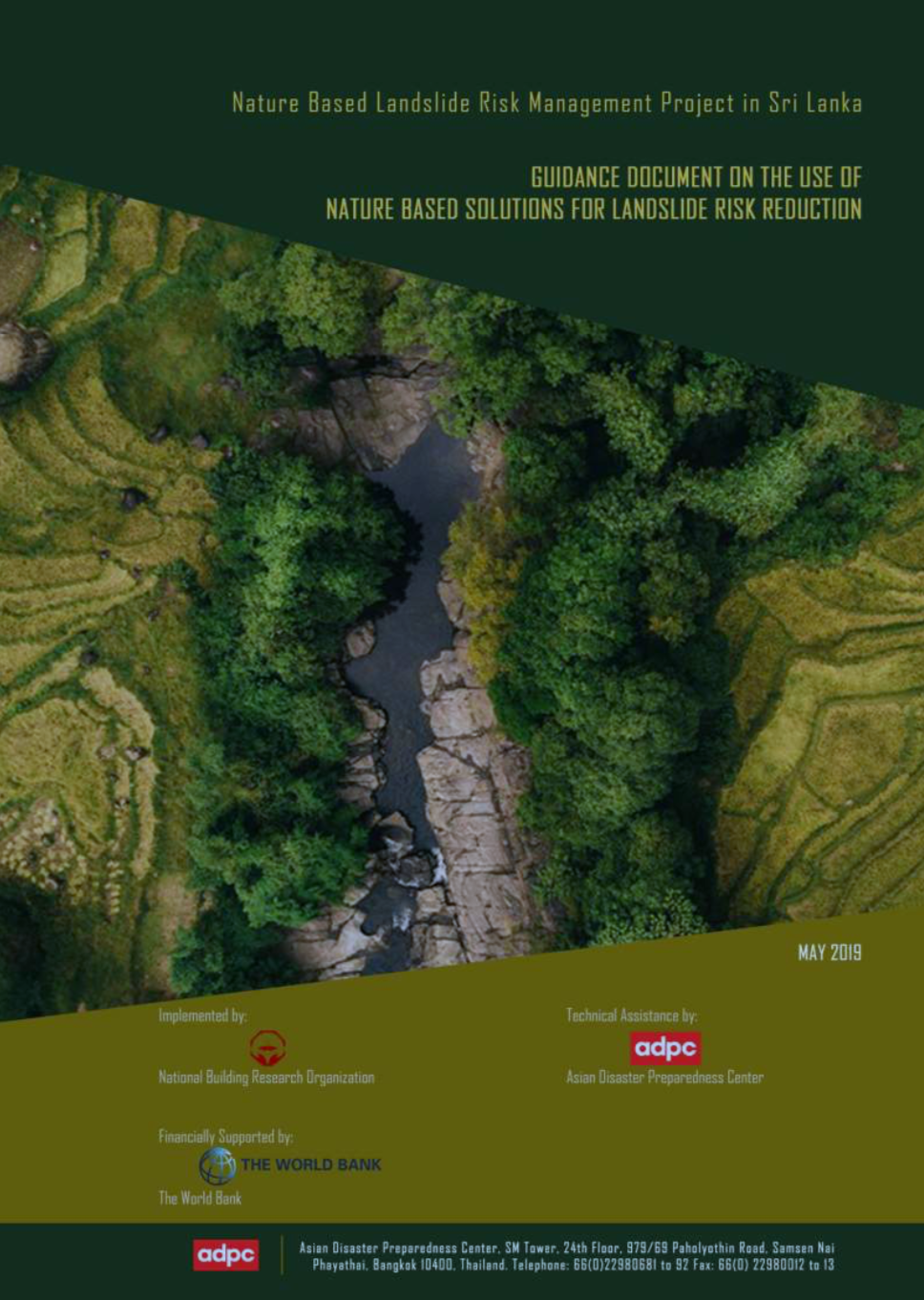© 2020-2022 The Global Program for Nature-Based Solutions for Climate Resilience. All Rights Reserved.
With landslides becoming increasingly frequent in Sri Lanka, importance of undertaking risk mitigation interventions is growing. In the past Sri Lanka has largely relied on engineering solutions on landslide risk management and the application of nature-based and hybrid (engineering in combination with nature based) approaches for landslide risk management has been limited. It has been demonstrated in many countries in Asia that the risk-informed nature-based solutions can be effective in reducing the occurrence and associated impacts of such landslides. This document is expected to serve as a guidance manual on application of nature based as well as hybrid solutions. Some of the good practices of bio-engineering for stabilization of vulnerable slopes and reducing the erosion potential is also included in the document. The nature based and especially hybrid solutions presented in this guide are chosen specifically to Sri Lanka’s need for landslide risk reduction. In addition, it is expected that the vegetation cover may make the appearance of slopes as natural as possible, and help in creating not only safer but also more visually acceptable and ecologically sustainable slopes. This manual is written for the use by engineers, geologists, town planners, land use planners and the like, who will be directly involved in structural mitigation work for reducing landslide risks. The manual will provide those involved in designing the landslide risk mitigation projects with some understanding and technical guidance in application of bio-engineering measures in slope stabilization.



